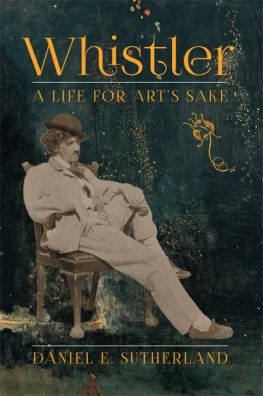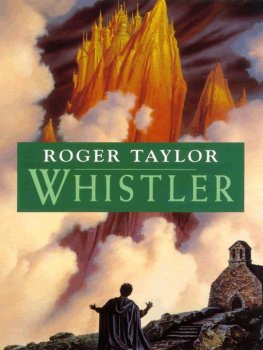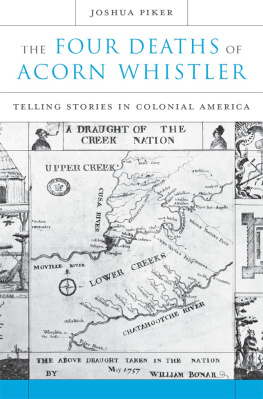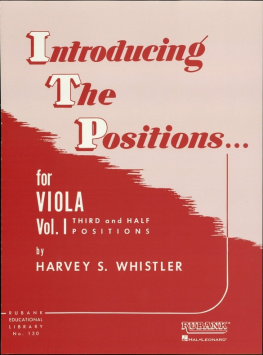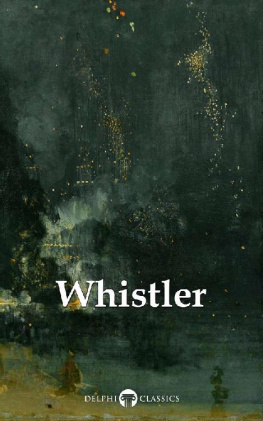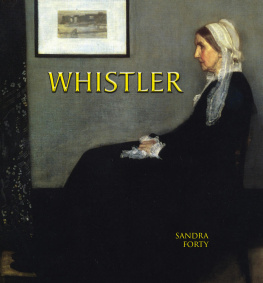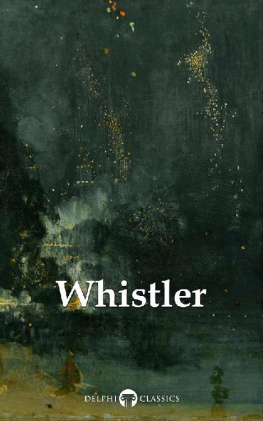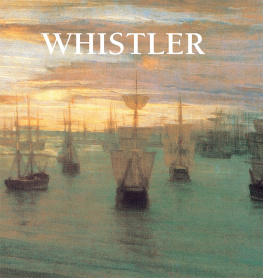
For Christopher, his own book.
Copyright 2014 by Daniel E. Sutherland
All rights reserved.
This book may not be reproduced, in whole or in part, in any form (beyond that copying permitted by Sections 107 and 108 of the U.S. Copyright Law and except by reviewers for the public press), without written permission from the publishers.
Designed by Emily Lees
Printed in China
Library of Congress Cataloging-in-Publication Data
Sutherland, Daniel E., 1946
Whistler : a life for art's sake / Daniel E. Sutherland.
pages cm
Includes bibliographical references and index.
ISBN 9780300203462 (cl : alk. paper)
1. Whistler, James McNeill, 18341903. 2. Artists United States Biography. I. Title.
N6537.W4S88 2014
759.13 dc23
[B]
2013027646
A catalogue record for this book is available from the British Library
Contents
Preface
I first met James Whistler when I was twelve and he had been dead for fifty-five years. The occasion was a grammar school trip to the Detroit Institute of Arts. There he was, a self-portrait, right next to his most notorious painting, Nocturne in Black and Gold: The Falling Rocket. The memory of that encounter has stayed with me, and now, with the passing of nearly another fifty-five years, it is my reason for telling his story.
First, though, you need to know some things about Whistler. From childhood, he cared passionately about art. Relatives and friends, even the closest and most beloved, came second. Though sensitive and generous, his single-mindedness made him appear selfish, and none can deny that hubris and willfulness defined a large part of his character. Most people found it easier to admire Whistler than to love him. Luckily, we need do neither, but only understand him, although that, in itself, is a challenge. For one thing, the truth was seldom good enough for Whistler. He created his own reality, in both life and art. He had other quirks, but that one most defined him. Insecure and a dreamer, his life became a quest, a constant becoming, in which he frequently reinvented himself. As one of the first modern artists, he learned to market himself by fashioning a public image. He intended that people should see him as he wished to be seen. We all do it. As Mark Twain famously said, each of us is a moon, with a dark side we show to no one. Still, it is something else to conceal one's whole self, and something yet again to seek notoriety with a consciously invented other self. That became Whistler's specialty.
Further complicating matters, he had no easily defined identity. This fact stymied his contemporaries and has frustrated biographers. Ezra Pound, a self-consciously poetic incarnation of Whistler, claimed him as an American, the greatest one since Abraham Lincoln. Others thought him a European, most especially a child of France. He has been called the quintessential outsider and the ultimate insider. He was a maverick and a rebel, but also a much honored Master. He was an untutored genius and a hopeless charlatan. He was inventive and avant-garde; he was eccentric and derivative. He was outrageously egocentric and painfully insecure. Take your pick. Whistler was all those things. Best leave it at that, for to distill or categorize him only diminishes or obscures larger truths.
But make no mistake. James Whistler was a very great artist, arguably the greatest of his generation, and a pivotal figure in the cultural history of the nineteenth century. Critics past and present have judged him the finest etcher since Rembrandt. The painting of his mother may be the second most recognizable portrait after the Mona Lisa in the Western world. His pastels and lithographs shattered assumptions of what those forms could or ought to be. Most important was his artistic vision. His restless mind, constantly probing and searching for new, more inventive ways to put on paper, canvas, and copper what he saw with his painter's eye, kept him a step ahead of nearly all his contemporaries. He borrowed from others, to be sure, but he more often inspired. If the power of art is to create images and symbols that change consciousness and alter perceptions, then no one in the nineteenth century did it better. He explained his vision, too, by writing and speaking publicly about what art ought to be.
Without doubt, Whistler led an eventful and controversial life. One might even call it a saga. He seemed to know everyone of any artistic or literary importance in nineteenth-century Britain and France, the two countries where he lived for virtually all his adult life. Today, he is best remembered for suing the eminent art critic John Ruskin, his rivalry with Oscar Wilde, his public battles with both friends and enemies, his not unrelated autobiography The Gentle Art of Making Enemies, and the iconic painting of his mother. Too little is known of the circumstances that forged those memorable moments and over 2,700 paintings, drawings, etchings, and lithographs.
A popular expression of his day, art for art's sake, heralded beauty as the ultimate justification for art. To the extent that Whistler devoted himself to the pursuit of beauty, his was a life for art's sake. One might even call it, given the compulsive nature of his pursuit, art for life's sake. Success did not come easily to Whistler, for he devoted himself not just to art, but to perfection. This, more than anything else, defined the contours and ups and downs of his life. It explains his insecurities, the constant questioning of his own abilities, his sometimes outlandish responses to critics, his failure to be long satisfied with successes, his self-promotion, the longing for recognition, the constant reinvention, the dark side that he showed to no one. Then again, there was the sheer joy of it all. Whistler loved being an artist. That he produced works of genius is his legacy.
Acknowledgments
Naturally, I have personal debts, probably more than I realize, and certainly more than I can recall, but here are the obvious ones.
I visited thirty libraries and archives in consulting the 200 manuscript collections and 2,000 books, catalogues, dissertations, articles, essays, newspapers, and pamphlets that form the bedrock of my research on Whistler's life. Each institution is identified in the abbreviations used for my endnotes, and while every librarian and archivist with whom I came in contact was helpful and gracious, a few people stood out.
In the United States, thanks to Alice Lotvin Birney at the Library of Congress for guiding me patiently through the intricacies of the PennellWhistler Collection. The staff in the library's manuscript reading room, who had served my needs on previous visits, blinked twice when I said I was there to work on Whistler, but they pitched in, as always, to make my weeks with them profitable and agreeable. Elsewhere in Washington, Judy Throm and the efficient staff at the Archives of American Art were immensely helpful, both in the confines of their cramped temporary quarters on D Street, SW, and later, in their spiffy new digs on 9th Street, NW. Colleen Hennessey, Lily Kecskes, and Kenneth Myers (now at the Detroit Institute of Arts) placed all the resources of the Freer Gallery of Art at my disposal. The same was done for me by Susan Augustine at the Ryerson and Burnham Libraries, Art Institute of Chicago. Martha Tedeschi, formerly curator of prints and drawings at the AIC (now deputy director), not only explained the mysteries of lithography to me, but also, in due course, courageously read portions of a very unfinished manuscript. Thanks as well to Susan Lintleman, Alan Aimone, and Suzanne Christoff in Special Collections at the Cadet Library, U.S. Military Academy.
Next page
